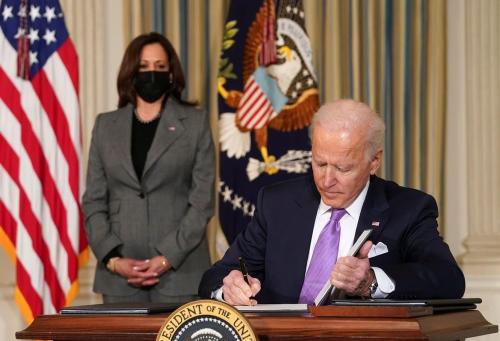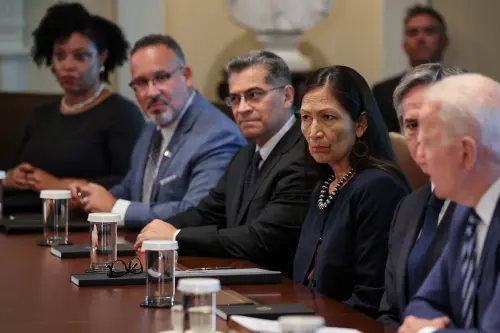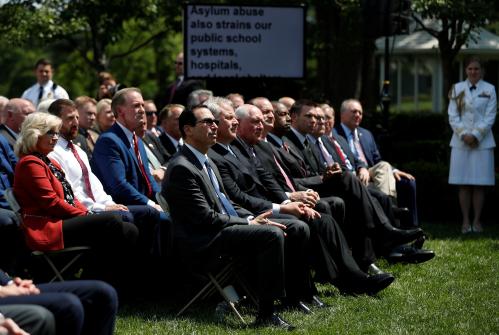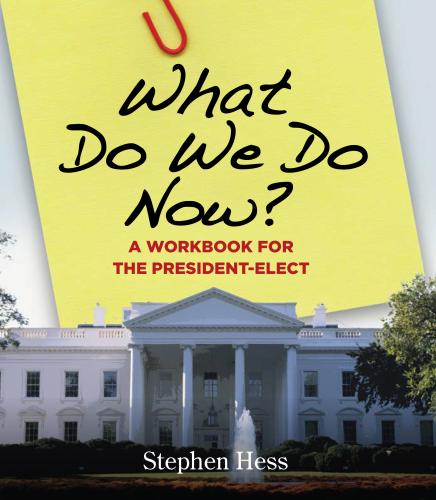On September 11, 2014, Al Kamen of the Washington Post quoted from a White House email announcing that the White House would no longer be holding their bi-weekly Cabinet chief of staff lunches or the biweekly regular calls on Mondays and Thursdays. White House Cabinet Secretary, Broderick Johnson, did note, however, that they would “transition to smaller breakfasts that will focus on different Presidential priorities,” and that they “will hold subject specific calls as needed.”
In short, they’re cutting back on regular communication with their political appointees at a time when they need them most. This should not be surprising since it is well known that President Obama’s Cabinet has been held at arm’s length since day one. In addition, ever since Nixon, presidents have centralized policymaking within the White House, effectively pushing the Cabinet and executive branch appointees to the periphery. While President Obama is not the first to keep his Cabinet members at arm’s length, the degree to which this administration has marginalized the critical role of the executive branch is stunning, and has likely already undermined his ability to leave a lasting legacy. Nevertheless, this latest snub is noteworthy for at least three reasons.
First, these executive branch appointees are essentially the president’s only allies in Washington, D.C. Their job is to assist the chief executive and do whatever it takes to help achieve the administration’s goals. Why further alienate those who are actually looking out for the president and want him to succeed? Regardless of the midterm election outcome, prospects for a better relationship on Capitol Hill, let alone important legislative accomplishments, are slim to none. In addition, key interest groups that supported the president in the early years have either gotten what they wanted or are alienated because the president has not pursued their agenda. Don’t look to interest groups for assistance. Even the American public has become disenchanted. Given this dismal political climate for the president, the president’s best bet is to support and work with his last remaining allies in the executive branch.
Second, the final two years is prime time for legacy building. It is time for the president to use the levers of the federal government to promote his agenda. Here are outstanding examples from both the Clinton and Bush administrations. In less than three weeks in January of 2001, President Clinton took advantage of the Antiquities Act, issuing eight proclamations that designated over one million acres of public land as national monuments. President Bush followed suit by issuing four such proclamations (that amounted to over 214 million acres) in January of 2009. No doubt, their advisors worked in close consultation with the Interior Department to identify key public lands and opportunities.
To provide another illustration of legacy building strategy, consider this fact: in one month (January 2001), President Clinton issued roughly three times as many executive orders (12) as compared to monthly averages in 1993, the year with the greatest number of executive orders (57/roughly five per month). It’s time to use executive action and who better to consult than your Cabinet. Of course, issuing proclamations and executive orders is not the only thing that outgoing presidents can do. The executive branch is best known for promulgating regulations. Make that Federal Register thicker by identifying goals (e.g., environment, education, labor) and consult with the Cabinet about how they can make a difference. In addition, the Cabinet and political appointees can encourage high level political appointees to “staff up” the departmental ranks with solid, hard-working bureaucrats before January 2017, to leave a lasting legacy within the SES ranks.
Finally, while some critics accuse the president of defining his job as “governing the White House,” it’s worth reminding everyone of his constitutional role as chief executive. The federal government possesses tremendous power and capacity, consisting of hundreds of thousands of employees who determine the spending of billions of federal dollars. Presidents can provide direction and turn this ship of state in a preferred direction. I’d encourage the White House team to put together a punch list of things they’d like to accomplish before 2017. Then invite Cabinet secretaries and top political appointees to hash out a strategy for accomplishing these goals. Odds are that they will be delighted to engage in such an endeavor, and such a gesture would go a long way in terms of boosting morale. The final days of any administration are a long, tough slog; so encourage these appointees to stay until the end by giving them a sense of purpose.
While the first term was a period of major legislative achievement with the passage of economic stimulus, financial reform and the Affordable Care Act, to name the big hits, the second term has been noteworthy for the absence of legislative achievement. That alone should be a clear sign to the White House to change tactics and open up the lines of communication with the Cabinet. That may be their best hope in the years ahead.










Commentary
A Curious Strategy for the Obama Administration’s Final Stretch
September 15, 2014